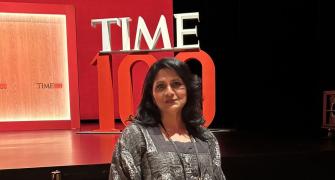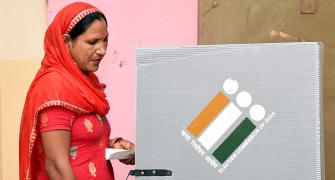Technology players like IBM, Microsoft and Texas Instruments are working out innovative ways to use technology to cater to the special needs of differently-abled people.
IBM, for instance, recently added a Human Ability and Accessibility Centre to make technology and information easily accessible to people with visual, cognitive, hearing, and motor disabilities in India.
The company also launched Easy Web Browsing (for the visually-impaired), WebAdopt2Me (for people with cognitive impairments or low vision), IBM aDesigner (disability simulator), Hindi speech recognition and English assessment tool called Sensei among others.
Historically, IBM has always been actively involved with delivering solutions for the differently-abled, like its Model 1403 Braille printer, developed in 1975, or its talking typewriter for the blind in 1980, followed by a talking display terminal in 1981.
As computers migrated to graphical user interfaces in the 1980s, IBM developed one of the first screen readers to work with that new technology. Since 1985, IBM's Special Needs Systems group has developed technologies that assist people with disabilities. The company recently developed Home Page Reader tool, a self-voicing web browser.
Frances West, director, IBM Human Ability and Accessibility Centre, IBM Corporation, said: "The centre will cater to the different needs of government bodies, business houses, academic institutions, research workers and non-government organisations."
While IBM research labs will share their technical know-how, West imagines that India centre has the power to become "an example for the rest of Asia."
IBM is, however, not the only big player in the field. US-based Texas Instruments, in collaboration with Ambient Technologies, has developed a prototype for a "thought-controlled" motorised wheelchair for people who have little or no ability to speak.
This was showcased at the Texas Instruments Developers' Conference India, 2007. This wonder wheelchair is guided by thought and a slight movement of the Adam's apple. When a person intends to communicate, an implanted sensor/larynx control system "reads" the electrical signals that the brain uses to command the larynx to speak.
"Applications such as these demonstrate beyond any doubt that there are increasingly fewer limits to how innovative technology can better the lives of disadvantaged people," said Praveen Ganapathy, director (corporate business development), Texas Instruments India.
"Today, while we focus on access to information and communication technologies for all, it is heartening to note how technology is heralding a new world of opportunities for the disabled," he added.
Microsoft, the global software giant, is also developing products to cater to this special user base. It recently tied up with the Digital Accessible Information System Consortium in India for a development project that will make it possible for computer users who are blind or print disabled to make better use of assistive technology in their daily lives.
The project will enable the translation of millions of Open XML documents into DAISY XML, the lingua franca for digital talking books. The free downloadable plug-in will be released in early 2008.
Microsoft's Vista is also available with special features designed to provide a superior computing experience for people with special needs.
The features include a screen magnifier for the visually-impaired and Sticky keys, an accessibility feature designed for people who have difficulty holding down two or more keys at a time.
Erasing lines of division between regular and special needs of different users, Google Labs developed its Accessible Search. As an early product, it was designed to identify and prioritise search results that are more easily usable by the blind and visually-impaired users.
In its current version, this product looks at a number of signals by examining the HTML markup found on a web page. It tends to favour pages that degrade gracefully pages with few visual distractions and the ones that are likely to render well with images turned off. It is built on Google Co-op's technology, which improves search results based on specialised interests.
"Consideration of special needs is an integral part of Microsoft's product design process. The Open XML-DAISY XML translator builds on Microsoft's long-standing commitment to promote information access among users with disabilities.
For users, the ability to "Save as DAISY" in Microsoft Office Word represents an important validation of disabled users' needs and sends a powerful message to society at large," says Sanjay Manchanda, director (business division), Microsoft India.








